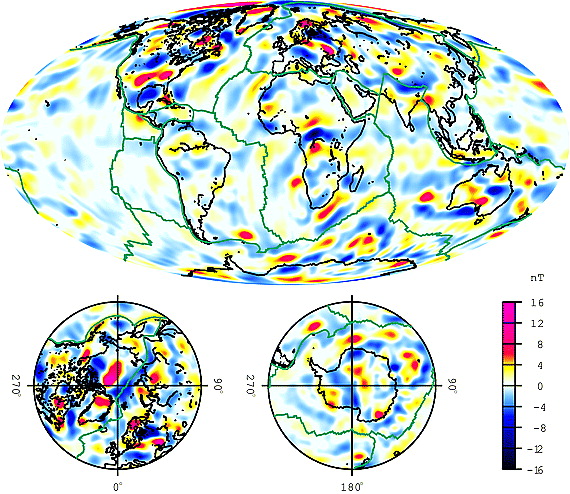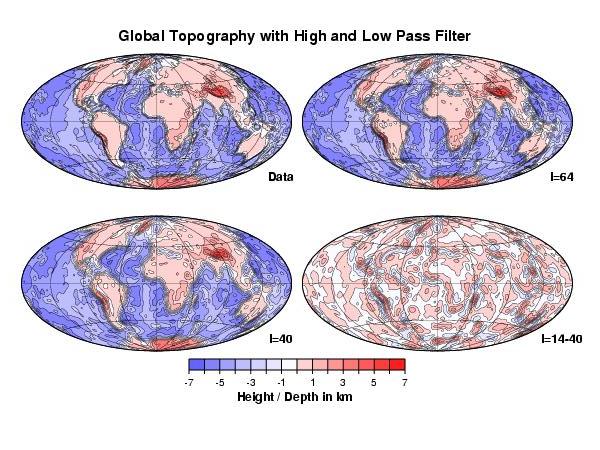
The Lithospheric Magnetic Field |
While the magnetic field we measure at the Earth's surface is dominated by field generated in the Earth's core, there is also a sizeable contribution from the Earth's lithosphere and crust, both from induced magnetisation from the main field, and also permanent remnant magnetisation (field frozen in to rocks at the time of their formation). The lithospheric field begins to dominate that from the core at wavelengths less than about 3000km. On small scales, magnetism (particularly aeromagnetism) is a well-known and much used tool in geophysical exploration. However, satellites, particularly CHAMP, allow us to obtain maps of the lithospheric magnetic field on continental length scales.

|
| The field from the Earth's lithosphere at satellite altitude (Maus et. al) |
We then seek to use such maps to bound large-scale lithospheric structure and tectonic processes. Unfortunately, the nature of our map makes this far from easy. We are limited both by finite resolution on short length scales, but also by the core field swamping long wavelength features. Imagine we were faced with the same problem in interpreting topography and bathymetry.

|
| Band limited topography |
Truncation at harmonic degree 64 does not change very much (although perhaps Brazilians would be surprised to have areas of their country below sea level!) Truncating to degree 40 (a pesimistic view of the resolution of the lithospheric magnetic field) obviously loses detail, but the overall structure is still clear. However, losing the long-wavelength signal is much more problematic. It is still possible to see familiar features (for example, Africa!) but only because we know they are there, an advantage we do not have in interpreting magnetic data. On this map, Madegascar looks more significant than the Himalaya! The interpretation of the long-wavelength lithospheric magnetic field is still very much an open problem.
Richard Holme (holme@liv.ac.uk)